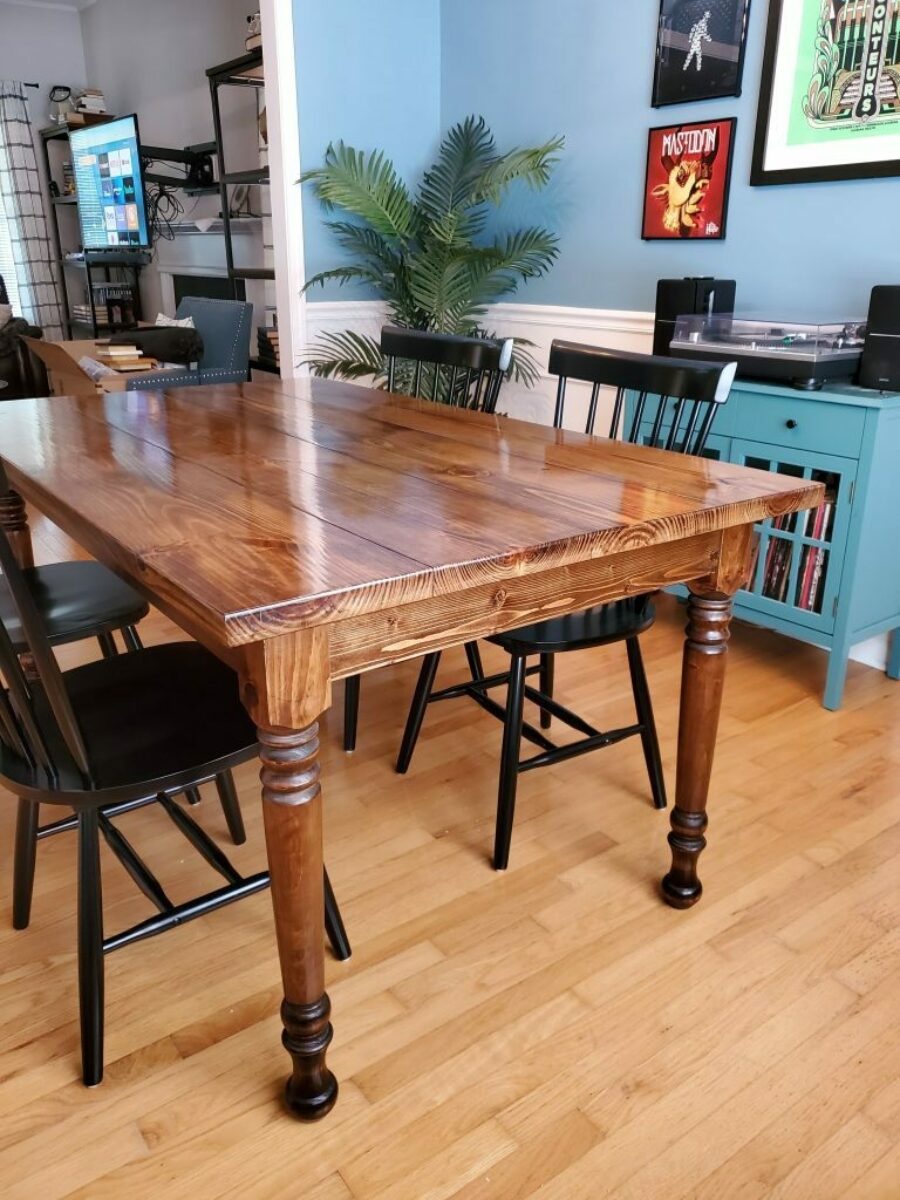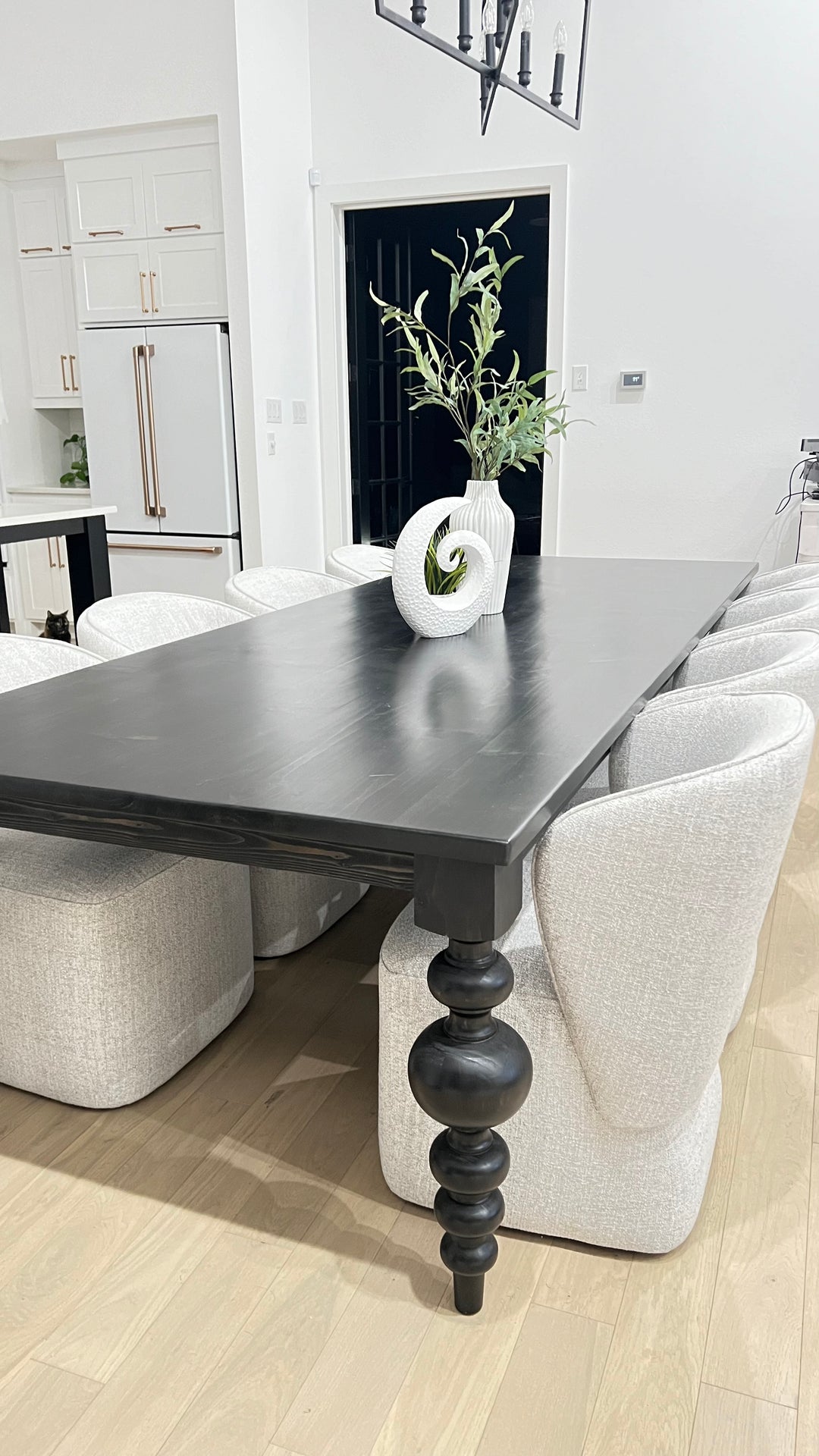Transform Your Dining Space with Stylish Dining Room Table Legs
Transform Your Dining Space with Stylish Dining Room Table Legs
Blog Article
Expert Tips for Setting Up Dining-room Table Legs for Maximum Stability
When it comes to mounting eating space table legs, attaining maximum stability is critical for both performance and looks. The process begins with choosing the appropriate materials and equipment, followed by meticulous placement and factor to consider of weight circulation. Each action plays a vital function in ensuring that the completed product stands up to day-to-day use without endangering security or layout stability. However, understanding the nuances of these components can considerably influence the overall end result. What details strategies can improve stability also better?
Select the Right Legs
When selecting the ideal legs for your eating area table, it is vital to consider both performance and appearances. The legs you choose will substantially impact the general design and security of the table. Initially, review the table's meant usage; if you expect constant celebrations, sturdier legs, such as those made from strong timber or steel, may be better, as they supply boosted toughness and support.
Following, take into consideration the elevation and style of the legs in connection to the tabletop. Common table usually vary from 28 to 30 inches in elevation, so make certain the legs align with this standard for convenience. The style of the legs ought to match the design of the table top-- whether it be modern, rustic, or standard. Tapered legs can include a modern touch, while transformed legs might communicate a much more traditional visual.

Select Appropriate Equipment
How can the best equipment improve the stability and longevity of your dining-room table? The selection of suitable hardware is important to ensuring that the legs of your table are securely attached and able to endure routine usage. High-quality screws, screws, and braces supply the necessary strength to sustain the weight of the table, along with any type of extra tons placed upon it throughout meals or gatherings.
When choosing screws, choose for those made from durable products such as stainless-steel or brass, which resist rust and keep integrity in time. The length of the screws is just as essential; they must pass through deeply into the table's structure without endangering integrity. For bolted links, consider utilizing lock washing machines to stop loosening up due to vibration or movement.
In addition, making use of corner braces can add additional assistance, especially for larger tables or those with much heavier tops. These braces distribute weight uniformly and aid preserve the table's form. Making certain that the equipment you select is proper for the certain materials of your table will certainly even more improve its total security and longevity, description enabling you to appreciate your eating experience for several years to come.
Ensure Appropriate Positioning
Correct positioning of eating room table legs is crucial for both aesthetic appeal and practical security. To achieve ideal placement, begin by measuring the range from the table's corners to the leg add-on points.
Utilize a degree throughout installment to confirm that each leg is vertical to the tabletop. It is recommended to mark the wanted leg placements on the bottom of the table with a pencil or covering up tape prior to securing them.
Furthermore, double-check the alignment after the first screws are tightened up, as changes might be essential prior to completely safeguarding the equipment. By prioritizing proper positioning, you not only enhance the table's general design yet likewise ensure that it continues to be useful and steady for years ahead.

Consider Weight Circulation
After making sure appropriate alignment of the dining area table legs, it is essential to think about weight distribution to boost stability and functionality. dining room table legs. Correct weight circulation is essential in preventing tottering and guaranteeing that the table can support its desired tons without risk of tipping or falling down
When positioning the legs, guarantee they are put at equivalent ranges from the facility of the table to equally disperse the weight across the framework. Consider the weight of the table top and any type of items that will regularly hinge on it, such as decorative items or tabletop devices. Tables with heavier surface areas should ideally have legs located closer to the corners, as this maximizes the base of assistance and reduces the threat of instability.
Additionally, if the table is meant for usage in a high-traffic area, think about using much heavier products for the legs or adding supporting components, such as cross-bracing or a lower rack - dining room table legs. These modifications can aid maintain balance and stop shifting during usage. Inevitably, a well-considered weight distribution method will significantly enhance the table's general efficiency, guaranteeing it remains a eye-catching and functional centerpiece for your dining area
Examination Stability Before Usage
Testing the stability of the dining room table before use is an important action that should not be ignored. If the table shows instability, determine the legs or joints that might call for modification.
Next, examine that all bolts and screws are tightened up correctly. Loose connections can bring about instability and potential damages with time. If essential, use timber adhesive on joints to improve stability, guaranteeing to allow adequate drying check time.

Verdict
Finally, the setup of dining room table legs requires cautious consideration of materials, equipment, weight, and positioning distribution to attain optimum stability. By selecting durable legs and top quality bolts, making certain specific positioning, and distributing weight evenly, the structural integrity of the table can be substantially improved. Performing a security test before routine usage additionally guarantees that the table will certainly stand up More hints to everyday stress, thus providing a trusted and risk-free eating experience.
When it comes to installing eating room table legs, attaining maximum security is vital for both functionality and appearances. The legs you select will significantly affect the overall layout and stability of the table (dining room table legs). Common eating tables generally vary from 28 to 30 inches in elevation, so make sure the legs straighten with this standard for convenience.Proper positioning of dining space table legs is essential for both aesthetic allure and functional security.In conclusion, the setup of eating room table legs calls for careful factor to consider of materials, hardware, placement, and weight distribution to accomplish optimum stability
Report this page